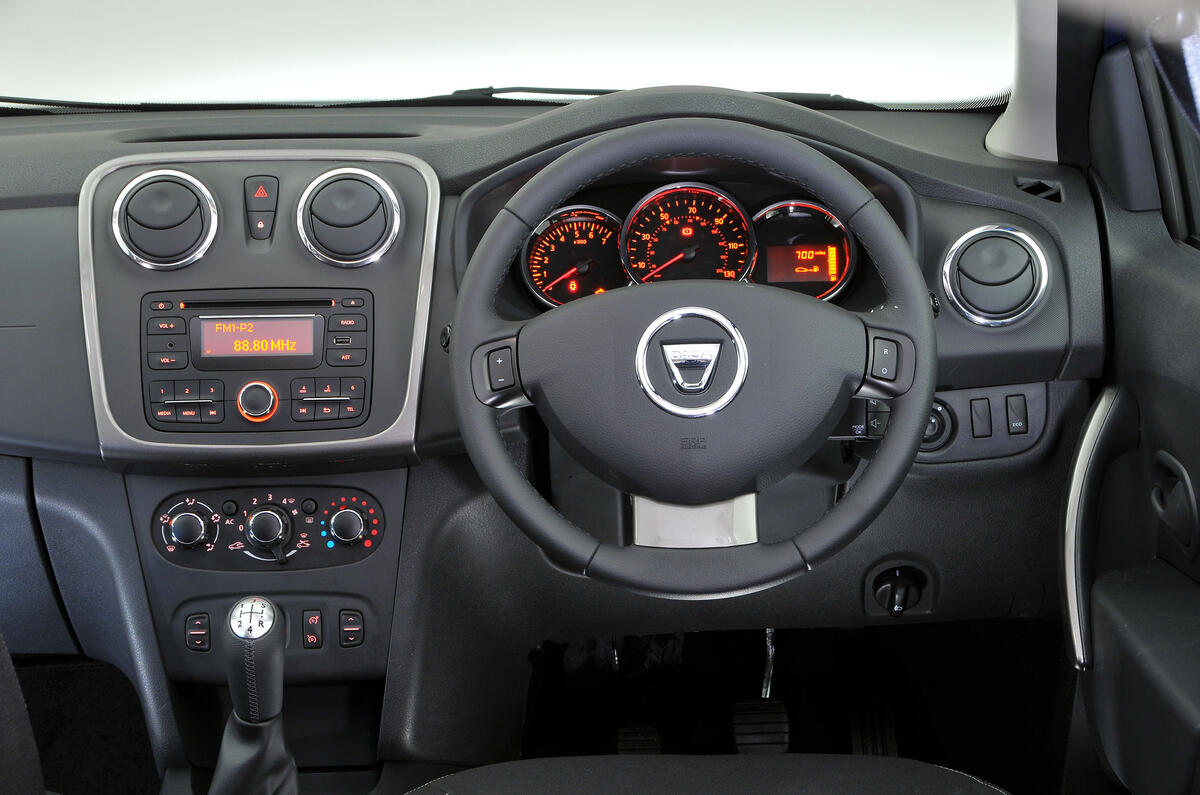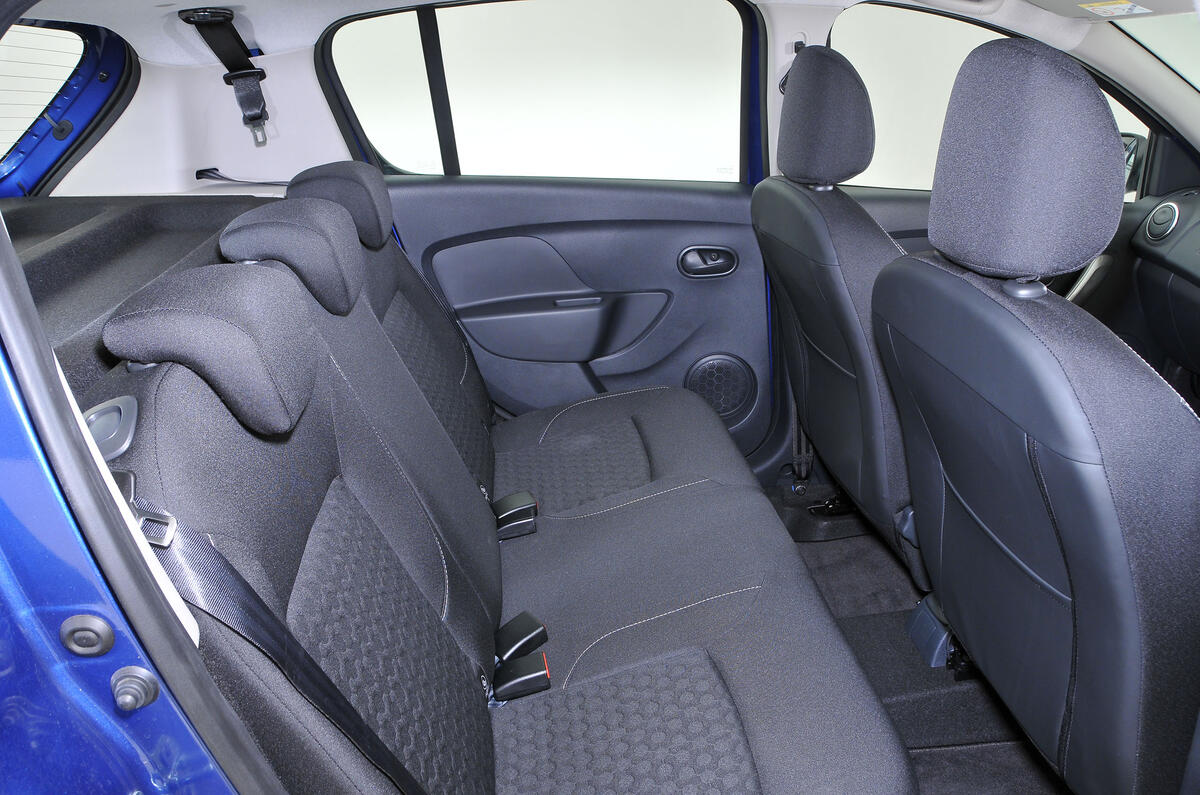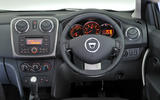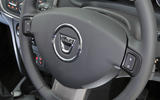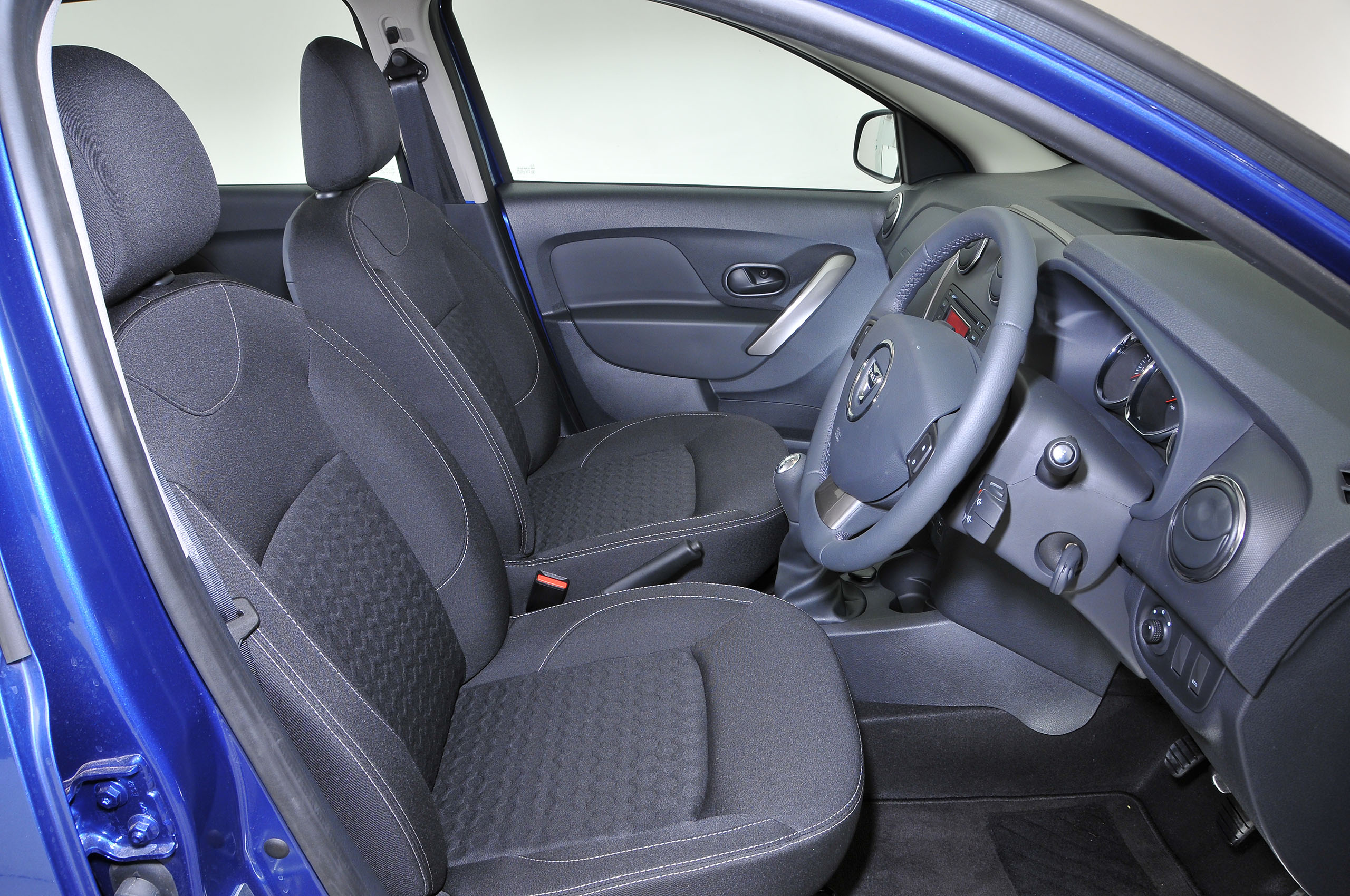Predictably, there's nothing spectacular about the Dacia Sandero's cabin – except space. Compare the car with its nearest rivals by price, the likes of the Suzuki Alto and Skoda Citigo, and the Dacia's case crystallises. There's 830mm of maximum rear legroom, 950mm of rear headroom and 780mm of usable boot length here.
That's only marginally more rear cabin space than you get from a modern city car, but much more cargo volume. The Sandero is actually more spacious than a Peugeot 208. Adults can sit in the back in decent comfort, and there are five doors and a boot you don't need to make excuses for – all not to be sniffed at in this end of the market.
The car's fixtures and fittings are more sparse and basic than you might be used to but, while they're rudimentary and plain, they work well. The cabin plastics are hard and ungrained in places but feel durable.
There's a mixture of tones to break up the monotony on the fascia too, and even the odd glossy black finisher.
Entry-level models come with manual windows and manual door locks, a heater, a rear demister, air bags and a 12v socket, but no air-con. Despite a fixed steering column and a seat that doesn't adjust for cushion height or angle, the driving ergonomics are good and the instruments are clear.
There are no head restraints for rear seat passengers, and that's a potential safety issue. They wouldn't need to be comfy, just functional, like the rest of the cabin. Also of some annoyance is the fact that occupants can't lock their own door as they close it. A Sandero driver must always be last out, as well as first in, in order to secure the car – and that is needlessly inconvenient.
Upgrade to the Access trim and a few more styling tweaks are added, along with manual wing mirrors and wiring for a stereo system. Opt for the more upmarket Ambiance trim and the situation improves a little. You get electric front windows, remote central locking, a splitting rear seat and a radio with USB and auxiliary connections. Sanderos in this specification are, consequently, considerably more appealing and easier to live with. Selecting this trim level also adds three height-adjustable rear headrests, a notable safety improvement over the entry-level model, and for 2017, also includes a height adjustment pack as standard - which allows you to adjust the height of the steering wheel and driver's.
The range-topping Dacia Sandero Lauréate, besides myriad cosmetic upgrades, comes with an even more comprehensive kit list that will be acceptable to buyers used to more upmarket models. It includes niceties like air-con, electric rear windows, a trip computer, cruise control, a 7-inch touchscreen multimedia system with sat-nav and rear parking sensors.







